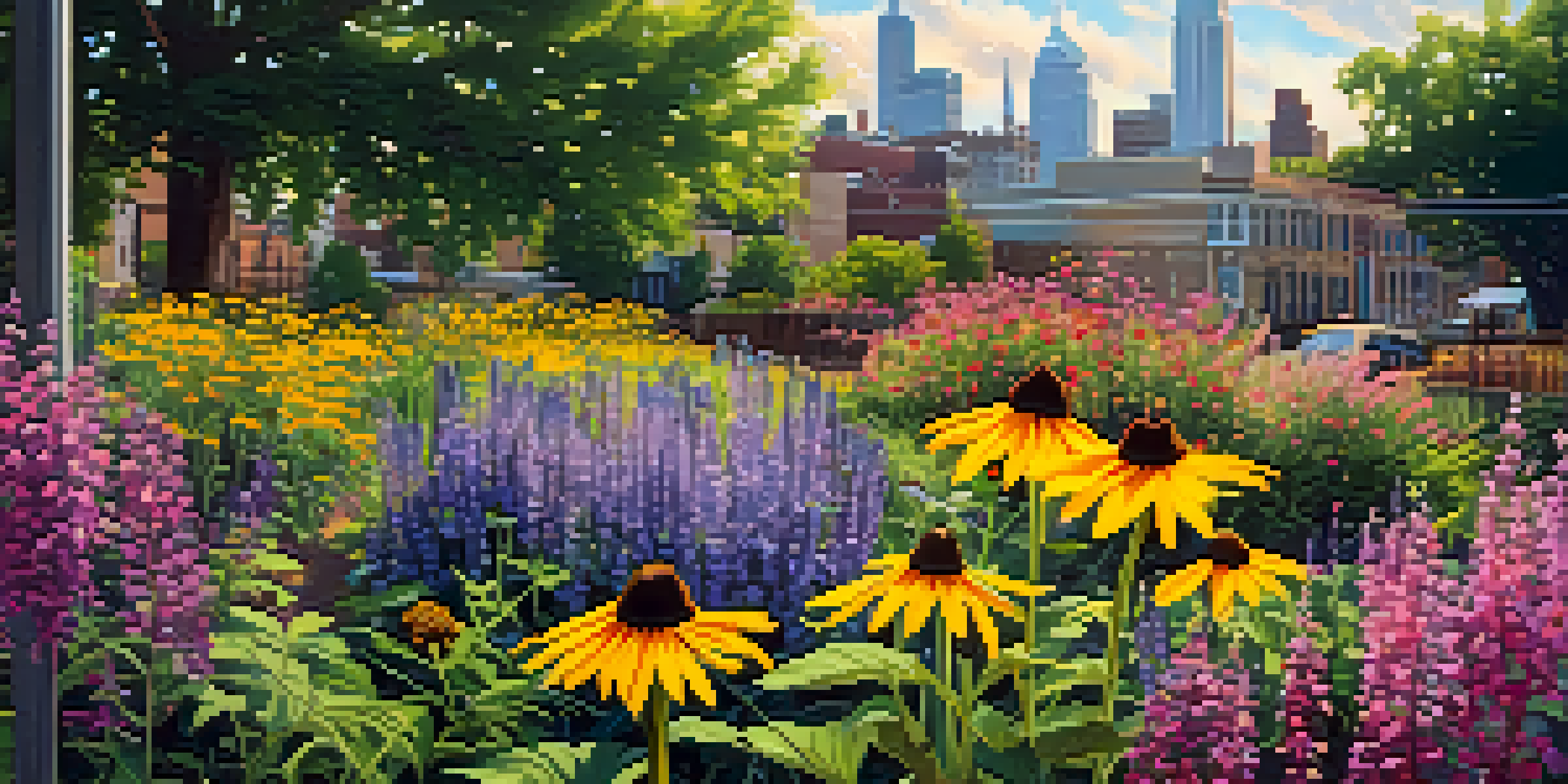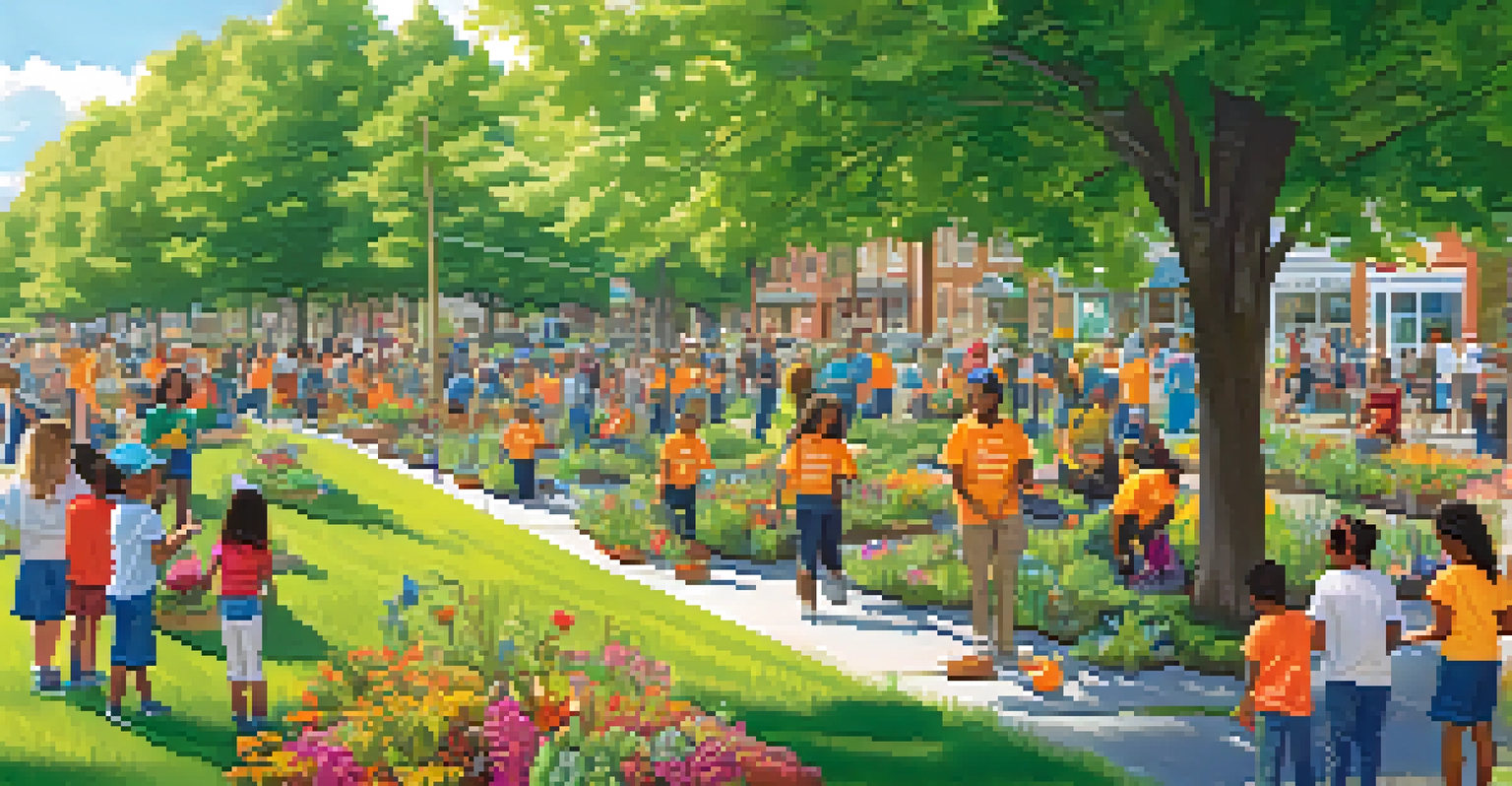Biodiversity in Newark: Protecting Local Flora and Fauna

Understanding Biodiversity and Its Importance
Biodiversity refers to the variety of life forms in a specific habitat. In Newark, this includes countless species of plants, animals, and microorganisms. It's crucial because it helps maintain ecosystem balance, supports food webs, and contributes to our overall well-being.
Biodiversity is the cornerstone of ecosystem health and provides us with the resources we need to survive.
When we talk about biodiversity, we’re not just discussing the number of species; we’re also considering genetic diversity within those species and the ecosystems they inhabit. For instance, diverse populations of bees in Newark help pollinate local plants, which is vital for food production.
Moreover, a rich biodiversity can enhance resilience against environmental stressors. If one species is affected by disease or climate change, others can fill its role, ensuring that the ecosystem continues to function effectively.
Newark's Unique Flora: A Closer Look
Newark is home to a variety of native plants, from vibrant wildflowers to towering trees. These plants not only beautify the city but also provide essential habitats for local wildlife. For example, the native Eastern Redbud tree offers shelter for birds and insects alike.

Interestingly, some of Newark's most common plants have rich histories tied to the area. The Black-eyed Susan, for instance, is not just a pretty flower; it plays a role in local ecosystems by attracting pollinators and providing food for various creatures.
Biodiversity Supports Ecosystem Health
Diverse species in Newark contribute to ecosystem balance, food production, and overall well-being.
However, urban development poses a threat to these native plants. Conservation efforts aim to protect these species by promoting native landscaping and reducing the spread of invasive species that can outcompete them.
Newark's Wildlife: A Diverse Animal Kingdom
The wildlife in Newark is as diverse as its flora. From birds and mammals to insects and amphibians, the city hosts a wide array of species. For instance, the Newark Bay area is a critical habitat for migratory birds, making it a hotspot for birdwatching.
The greatest threat to our planet is the belief that someone else will save it.
Urban wildlife, such as raccoons and foxes, have adapted to city life, often seen rummaging through parks and backyards. Their presence highlights the need for coexistence strategies, ensuring that humans and wildlife can thrive together.
Sadly, many local species face threats from habitat loss and pollution. Conservation programs in Newark are working to create wildlife corridors and protect vital habitats, ensuring that these animals have a safe place to live.
The Role of Community in Biodiversity Conservation
Community involvement is vital in protecting Newark's biodiversity. Local organizations often host events, such as tree plantings and clean-up days, encouraging residents to take an active role in conservation. These initiatives not only foster a sense of community but also educate residents about the importance of local ecosystems.
Schools and community groups are also stepping up, integrating environmental education into their programs. By teaching children about local flora and fauna, they help cultivate the next generation of environmental stewards.
Community Engagement is Crucial
Local organizations and residents play a vital role in conservation efforts, fostering a sense of community while protecting biodiversity.
Moreover, community gardens have become popular in Newark, promoting biodiversity while providing fresh produce. These gardens serve as a great example of how urban spaces can support diverse ecosystems.
Challenges Facing Newark's Biodiversity
Despite Newark's efforts, various challenges threaten local biodiversity. Urbanization continues to encroach on natural habitats, leading to fragmentation and loss of species. Roads and buildings can create barriers for wildlife, making it difficult for them to find food and mates.
Pollution is another significant concern, with water and air quality affecting the health of both plants and animals. Contaminated waterways can lead to a decline in aquatic species, disrupting the entire food chain.
Climate change adds another layer of complexity. As temperatures rise and weather patterns shift, species that once thrived in Newark may struggle to survive. Addressing these challenges requires a multifaceted approach, combining community action with policy changes.
Conservation Initiatives in Newark
Numerous conservation initiatives are underway in Newark, focusing on restoring habitats and protecting endangered species. Organizations like the Newark Conservancy work tirelessly to improve green spaces and educate the public about biodiversity. Their programs often include planting native species and creating pollinator gardens.
Additionally, partnerships between local government and non-profits have resulted in successful initiatives, such as the creation of wildlife refuges. These protected areas provide safe havens for local species, allowing them to thrive away from urban pressures.
Urbanization Threatens Wildlife
Challenges like habitat loss, pollution, and climate change pose significant risks to Newark's rich biodiversity.
Public awareness campaigns also play a crucial role, encouraging residents to participate in conservation efforts. By sharing knowledge about local biodiversity, these campaigns aim to inspire a collective commitment to protecting Newark's natural heritage.
The Future of Biodiversity in Newark
Looking ahead, the future of biodiversity in Newark depends on continued community engagement and effective conservation strategies. As more residents become aware of the importance of local ecosystems, we can expect to see increased support for green initiatives. This collective effort can help restore balance to the city’s natural environments.
Innovative approaches, such as green infrastructure and sustainable urban planning, will also be essential. By integrating nature into city designs, we can create spaces that support both human and wildlife populations.

Ultimately, by prioritizing biodiversity, Newark can serve as a model for other urban areas facing similar challenges. Together, we can work towards a future where local flora and fauna flourish alongside the urban landscape.